Photo

My current project is dealing with the responses such as nostalgia and homesickness and the long time repercussions caused by loss or for a better word - displacement. Within this work I am also trying to understand the relationship between these responses while exploring portraiture and the spaces inhabited.
0 notes
Text
Supporting documents - MA 101
Recordings from participants:
https://drive.google.com/drive/folders/1MnuemVcJizzvtseTYsBj_sMHaca4phhZ?usp=sharing
Manual Photo Album [(with critical reflection, failed work and success) (currently in Make Space studio)]
https://drive.google.com/drive/folders/1muonmQYC7-cctqPzi37E2uouQN7fiKcD?usp=sharing
Manual Journal notes (currently in Make Space studio)
https://drive.google.com/drive/folders/1xlfoC0CSjHu8bMxRNA6OII9Pp7HorL7d?usp=sharing
0 notes
Text
Post 1: Test Images (15th October 2021)


Mr.Reza Tarafdar. Owner, Treiman's store.
Camera used: Sony Alpha 7ii.
Lighting used: Available light.
Mr.Reza had kindly agreed to be a participant in my MA project for the whole year. I was quite a at loss when almost each and everyone of the people I had approached told me a straightforward 'no'. The starting of the project proved to be quite challenging. When I approached Mr.Reza, I was quite demoralized after a series of rejections. I even tried improving my pitch but thankfully, it all went well with him. He didn't require me giving any complex pitch at all. It was a very simple, "I have recently moved to Plymouth for my MA and I am capturing stories about South Asian grocery stores. Would you be able to help me with that? I might need to take photos of you at the store and your home." Well, there was a certain exchange involved in this. He asked me if I could document his daughter's Mehndi ceremony later in November to which I agreed. Truly speaking, I had never ever covered a wedding back in India. But, then I couldn't say no to such a proposal as I had already imagined plates of 'Mughlai' food in my mind!
The first day of shoot with Mr.Reza was definitely not a breeze. I had already postponed the initial decided date due to bad weather and which also meant that a weather check was necessary every time. Prior to this shoot, I also had a quick tutorial with Dr. Mohini Chandra which certainly did put few things in perspective. But, I was still confused how to go ahead with the topic I had chosen. Back to the shoot day, I went in at around 3:30 in the evening with a vague picture in my mind. I was bit unsure about how I wanted the images to look. The shop was positioned in a place opposite to the sunlight. That portion of the street looked quite dull and unappealing. My only companion was Sony alpha 7ii which I proudly own. I still didn't have any access to all the technical equipment at college. So no extra lights or flashguns. When I reached his shop, it was quite crowded with school kids creating a lot of noise. I tried framing a composition with the kids running around at the storefront. Nothing good happened. The lighting didn't work at all. I again tried taking photos of the storefront with a busy looking street. Couldn't get anything as I expected. This frustrated me a lot! I quickly asked Mr.Reza if I could take few portraits of him, only because I didn't want to feel unproductive. He agreed and within 10 minutes, I snapped few shots and called it a day.
The next task was to undertake a shoot at his home and we mutually agreed upon a date (29 October, 2021). For anyone, if you ever want to buy Asian ingredients, go to Treiman's store just on the other side of Plymouth station.
0 notes
Text
Post 2: Studio Shoot (18 October 2021)

Besan (Gram Flour) against a neutral background.
Camera used: Sony Alpha 7ii.
Lighting used: Elinchrom BX500 RI with Elinchrom Soft box.
I had a tough few days. Changing places isn't easy and when you change countries, it's even more challenging. In the past week I have just dragged myself to doing all the tasks. It's not that I have not changed places or cities before and I am aware of the emotions and mental state that's associated with transition. My first big change was in 2000 when I had shifted from Kolkata to Mumbai. Two completely different cities and the years following that have remained like a black patch in my life. Migration has it's effects and that too, bad if you can't relate to people around you and if you don't get that sense of belonging. In addition to that, I was clueless about the progress of my project. Apart from Mr.Reza, none of the people I had approached responded back. And, my project cannot proceed without people. It's all about them. In few of the stores, I had to pay multiple visits but no, nothing worked out. Self-doubt clouded over me like anything I could ever have imagined. It's definitely not a very nice feeling to go through. I was kind of looking forward to the studio I had booked in three days after the shoot with Mr.Reza. It was after a long time that I would again shoot with artificial lights. My plan was to create standalone neutral background images of various South Asian ingredients, raw materials and food. I was quite elated to find 'garam masala powder' (hot spices powder), 'besan' (gram flour) and 'poppadums' (kind of baked Nachos) at the store. These definitely makes me feel like going back home. I planned to finish up the 'poppadums' right after the shoot.
The kind of imagery I was trying to achieve with the studio lights were inspired from Sim Chi Yin's ongoing project "One Day We'll Understand" which was shown in our first tutorial by Jon Blyth. Basically, it was an online guest lecture by Sim Chi Yin where she took us through her whole photographic process. I was quite moved by the effort she had put in her work and the multiple kinds of photography she had experimented with for this project. The white background images had a fetishistic clinical look about them. She had also tried to recreate some of the old photographs of her family which yet again required a lot of technical knowledge and labour from her end. So, yeah, I wanted the same kind of look and feel for this shoot.

Shoot setup


Camera used: Sony Alpha 7ii.
Lighting used: Elinchrom BX500 RI with Elinchrom Soft Box.
Months of not practicing had obviously led to me forgetting about how to operate the studio lights. But, that was sorted in few minutes. The objects I wanted to photograph were small and required an elevation. Anyway, I tried positioning each of them on the product table and flashed one light with a softbox attached to it. The results were not good as I had expected. I always had a bit of issue with studio lighting as I never did receive any formal training in it but learnt whatever I could on my own. Besides, even though I had been into the commercial zone for a long time, my core practice involved natural light photography. Most of the product photography I had done over the years had been shot in natural light. It was in the last two years that I had taken a sudden interest in knowing how studio lights work.
Points to be noted: Use a white pedestal from next time. Use the other three lights already in the studio. Research a bit on how to take good white background images.
0 notes
Text
Post 3: First Crit session! (19 October 2021)
Unfortunately, I don't have any photos of this one. I also figured out that I am bit allergic to documenting. And, I don't even know why is that? I was actually waiting for this session as I really wanted an honest feedback and also some direction on my project.
I was quite nervous a well because there were literally no images to show. What would I ask for feedback on? There were four slots and one of them didn't turn up. Being socially anxious, presenting my work in front of a large group has always been quite challenging for me. I normally escape from such situations! But, here, I had no choice. I gathered some courage and opted to present last. Poppy Goldsmith was the first to present followed by Lilla Bukovacz. Both of them had done a wonderful job in compiling everything together which left me feeling like a nobody.
When my time arrived to present finally, I fidgeted with the laptop for few minutes, lost my voice and in fact forgot what I was supposed to talk about. Just to make things less messy, I opened this blog page, which gave mea direction and I started with the presentation. It went well unexpectedly. Maybe because there were less people around. Caroline was in charge that day and she was quite supportive. The good piece of advice given by her was to link my project topic to something from my childhood - maybe with a person or some memory. She also felt that I was quite clear with my topic and what I wanted to achieve, which actually got me thinking.
Finding South Asian grocery stores without guidance was bit tough. Google Maps doesn't show every shop out there. Post the crit session, there was a lingering thought in my mind that the topic was bit restricted. Basically, the reason for taking up this topic was to revisit those memories when I went grocery shopping with my mum and dad as a kid. And, after moving to Plymouth, I was feeling badly homesick and any kind of related things which reminded me of home felt good, even if it was for a short period of time. But, somehow, as a project topic, it didn't sound too promising.
0 notes
Text
Post 4: Books I have been reading

Our faces, our spaces : photography, community and representation, Judy Harrisson, 2014
The crit session had actually got me thinking about my project and of course in a good way. I was gradually leaning towards migration and notions of home and belonging as it was more relatable. However, migration was a lot easier for me compared to the people who had come down here 40 years back. It generally is an easy process right now for a lot of international students who fly here every year. Things are accessible and by things I mean to say food and people from your own community. It was not so fluid back then. A lot of people had migrated because they lost their home, or there was a war or unrest. Women mainly migrated as they got married and the transition was quite tough for them considering they were not well-versed in English. So, basically, I didn't have any migration story as such but I still kind of related to the feelings an immigrant goes through - specifically people who had arrived here in the 80's and 90's.
I had got in touch with few other people as well, mainly grocery stores as they seemed the easiest way to approach them rather than knocking on doors. I wasn't too hopeful though as most of the people I had talked with seemed too busy to care for a MA project. In the meantime, I also planned to visit Bristol to hunt for South Asian grocery stores. This was proving quite challenging!
The good part was that I was slowly getting access to almost all the technical equipment plus the library. I mean, the library was always there but, I was gradually able to understand which books could be prove a useful read. I had started with Robert Frank: The Americans to take a look at the documentary style of photography he had undertaken for this book. This didn't actually provide me with anything useful for my work but it was a real good piece of visuals. The one book which I really loved reading was Our faces, our spaces : photography, community and representation, Judy Harrisson, 2014. There were excerpts from a lot of contributors namely Stephen Foster, Professor Sunil Gupta, Sian Bonnell and Christopher Pinney. Judy had given her own excerpts as well featuring the photographic work done by the Batra Sikh community between 1977 and 1992. They were young children, basically students who had become members of the Mount Pleasant Photography Workshop in Southampton. None of these children had any prior experience in photography nor their parents did. Judy had provided each of them with a film camera and to her surprise, they did complete justice to the medium as well as the equipment. They had taken pictures of themselves, their family members, of friends, and provided everyone with an interpretation of their social, cultural and religious landscape which till date serve as a tangible piece of nostalgia.
Judy is still in touch with most of the members who have now grown old. Relationship building here played a large part of her practice which till today serves an evidence of the unattainable past.

Book - Photographers and Research: the role of research in contemporary photographic practice by Shirley Read & Mike Simmons.
The second book is Photographers and Research: the role of research in contemporary photography practice by Shirley Read & Mike Simmons. The reason behind choosing this book was because I had no clue about what a photographic research practice could look like. I was definitely doing a lot of things, but do they count as practice? Both Shirley and Mike have covered case theories of various photographers who are current practitioners exploring diverse topics - war, migration, mental health, loss, climate change and even Judy's work on Mount Pleasant Photography Workshop.
I will share few excerpts which informed me about what photographic practice might look like.
Maria Paschalidou believes that research is very much a creative process that exposes multiple possibilities; a process that requires openness to new pathways that may not be visible at the beginning of a project.Hybrid forms of knowledge create a dynamic context for theory and practice to collide and evolve in new waysPatricia Townsend believes that in creating a new body of work, photographers not only relate to elements of the outside world (the subject of the photographs, the camera, the prints and so on), but they also embark on a personal journey, which in turn will reflect some aspects of their inner world. (this was exactly what I have been doing)In contrasting the ‘two cultures’ of science and art John Dewey highlights the unique and intimate relationship that develops between artist and subject through the creative process, where the reciprocal action of research and practice fold into one another Mike Simmons: A useful and straightforward approach for photographers is the ‘What’? Framework for structured reflection. ( I keep on asking this to myself all the time)Reflection prompts interpretation and understanding in a number of ways and not only stimulates critical distance from your own practice, but it can also be applied to the work of others to examine a range of approaches, theories and contexts.Photographers use a range of mechanical devices and processes that can at times have a ‘mind of their own’ (This too! Mamiya 7ii stopped working midway and I am still struggling with a Zoom H5 recorder!)Scholarly studies across different disciplines have acknowledged the existence and influences of intuition and chance (I agree)The literature has also identified that an ‘open and questioning mind’ is required to identify and acknowledge such opportunities, which can be made explicit through the recording, reflection and evaluation of your activities.
Through my practice, I have come across quite a few people from various communities. Most of the time it has been people from Bangladesh, and as I share the same language with them which is Bengali, the connect was instant. In the meantime, I was getting myself for another shoot at Mr.Reza's home and not the store. The thing which I realized later was that I really needed to prepare lists of what I need to photograph or else it was tough to come out with any results.
0 notes
Text
Post 5: Shoot with Mr.Reza & Pampas Grass
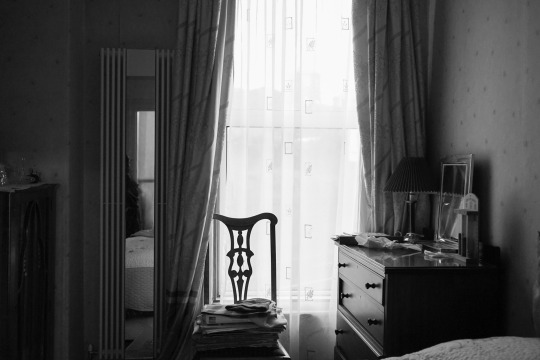
My first attempt to show the longing associated with homesickness. Mr.Reza's place at Mutley. Camera used: Sony Alpha 7ii. Lighting used: Available light.
Short intro about Mr.Reza: Currently owner of Treiman's store, Plymouth. His father had migrated from Sylhet, Bangladesh around 40-45 years ago. Mr.Reza completed his education from Plymouth University and opened the store in 2000. So, basically the store is now 20 years old. He now stays in Mutley with his wife, two daughters and parents. His daughters' name are Tasnim and Hanifa.
My intent with this shoot was not to just come out with pictures but also get to know them as a family, as people. I mostly tend to take things bit slow as that gives me a better understanding and also better results. But doing a full time MA does come with challenges. There's always this nagging pressure to create work and throughout the time, whenever I couldn't, it gave an incalculable amount of guilt. I always kept on feeling if I was going the right way or what am I exactly doing if I am not producing anything worthy.
However in spite of all the guilt, self-doubt and mental exhaustion, there was one good thing about my practice. Walking! A lot of the time, my collaborators or participants lived a long way away from where I live. So, that required a lot of walking and although I could have taken the bus, I preferred not to as it gave me a sense of purpose. Mr.Reza's house was in Mutley and a 30 minutes walk from my home. As I was not carrying any additional equipment but only my camera, it was not much of an issue.
Note: We had just got inducted with several film cameras but I still didn't have the courage to try out one for myself. Although, I had got the Mamiya R767 from the ERC which is supposedly good for portraits as I wanted to explore portraiture, I didn't load any film or take it with me for the shoot. The reasons were mainly as it was my first time using a film camera and my first proper shoot - I didn't want the whole time to go waste. In addition to that, I felt that the camera was bit bulky but maybe with time, I would get used to the weight. However, I went ahead with my comfortable digital camera Sony Alpha 7ii.
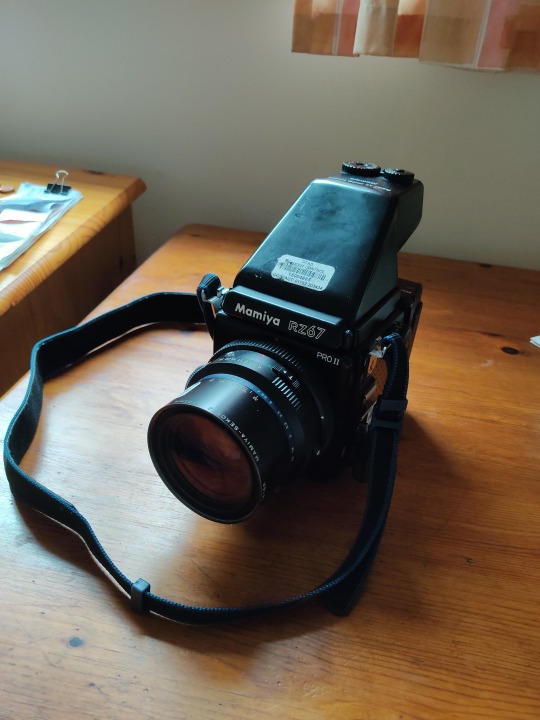
After half an hour of walking, I finally reached his home and Mrs.Tarafdar (his wife) greeted me with a warm smile. Awkward as I was, I went inside not knowing what to speak about. She offered me tea and snacks to which I said no because, yet again, it just felt awkward. We sat in the living room and talked for some time exchanging stories about how she landed here. She was accompanied by her daughter Tasnim that day who had studied Jewellery Design at PCA. Mrs.Tarafdar had moved to Plymouth 35 years back right after her wedding. As I was going through a lot of emotional turmoil at that time, I asked her about her initial experiences after moving to the UK. And, it didn't come as a surprise to me that, she had gone through a long period of loneliness and depression. 38 years back, they were the only people from their community to be living in Plymouth. In fact they were one of the first Bangladeshi families here. There were issues of adjusting to the new place plus with a new home, new people and a whole new language. She had learned English over the years and currently is a teacher at the Hyde Park School. Comparatively, it was not tough for his husband as he had already been living here for a longer time and he had work and his family to look forward to. For Tasnim, she associates herself more with this place and doesn't look forward to visiting Bangladesh very often.
After about 20 minutes or so, Mrs.Tarafdar asked me "Tell me Mouli, how can we help you?" I gave her a brief about my project that I am planning to cover migration and integration stories of South Asian people who run corner stores in the UK. Primary reason to highlight corner stores was reliving childhood memories of me accompanying my father to the corner stores every Sunday. And corner stores are still prevalent in India. I mean, back in India, I used to get my regular supply of groceries from the nearest corner store plus chat with the lady who was the store owner for long hours. After the first crit session, I was thinking if I should be going ahead with the topic but at the same time I was pretty lost in terms of my direction of the project. Plus, I was facing a lot of difficulty finding South Asian corner stores without any further references.
I was also interested in food as an identity as food is definitely the biggest connection for anyone who has migrated and are living away from home. Through food, people connect and resonate. There were certain images in my mind which I relayed to her - Hilsa fish, grinding spices, cutting onions, family having meals together. Unfortunately, she wasn't cooking anything that day which meant that required planning. I couldn't even take portraits of them that day as they were not mentally ready. And, even I didn't want to rush things. I asked her if she could take me around the place. This was their home, their space and I was interested in the details which suggested the same. Basically, I was again looking for some connect. It was a huge house with 6-7 bedrooms so the whole tour took a while.

Dried beans used in cooking.
Camera used: Sony Alpha 7ii.
Lighting used: Available light.
In Tasnim's room, I found a tray of beans kept for drying. It looked similar to green beans which I used to have in Bangalore. Although, they are not the same, but the process of drying and de-shelling the beans from the coating is similar. They are sun dried and then shallow fried with nigella and mustard seeds, dessicated coconut, curry leaves and an assortment of dried red and green chillies. Bangladeshis however make it in a different way.
I got my camera into action and tried using a 50mm for better quality and took a wider angle shot with 28-70mm as well. The issue which I face with 28-70mm is the high amount of distortion at the edges. Hence, I am not too fond of it. Mrs.Tarafdar then directed me towards her in laws room. I forgot to mention that it was a rainy Thursday and there was not enough available light. That was a challenge! The whole week prior to that day was bright and sunny and it turned all dark, gloomy and grey just on that day.
Her in-laws room was quite dark. I removed the curtains to allow in a bit of light which actually created a mood in the photos. I was not too impressed with the results though. There was a prayer table which caught my attention and I went near to it. There was something handwritten on a paper in Bengali. I took a closer look and found it to be related to a Muslim prayer. Surrounding the paper were prayer beads and a cap.
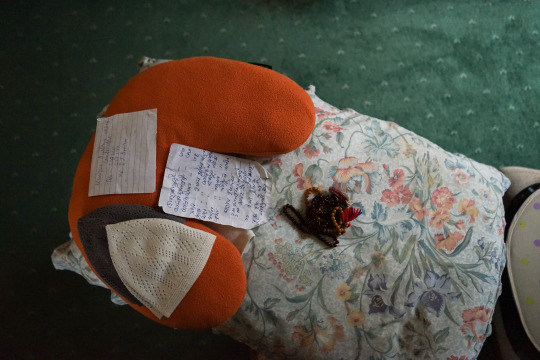
Prayer table and prayer beads.
Camera used: Sony Alpha 7ii.
Lighting used: Available light.
This obviously connected with me again as I had seen a lot of my Muslim friends in India pray in a similar kind of setting. Even though, I am not religious, it still did feel like home, of something which I have come across and grown up seeing. I took few shots of this with the available lights. The final image did require a bit of post-processing in Adobe Lightroom but it didn't turn out too disappointing either. Prior to this shoot, I had gone through Zarina Bhimji's work and particular her project 'Yellow Patch'. I loved how she used light as the essential element in her composition to capture distant interiors. I wish I had a better vocabulary to describe her work but he way she used light to capture spaces and micro details is something I aspire to do with my photographs every time.
Maybe the best or I should say the most satisfactory shot which I had taken that day was of the backlit room which I shared at the first. As a photographer I am quite interested in those inhabited spaces as they are personal, intimate and speak volumes about the person. What I could definitely understand visiting Mr.Reza's place was they take home decor and organizing quite seriously, unlike me!
I had spent about an hour and a half that day and that gave me some further thoughts to propel my project. However, it was only Mr.Reza with whom things were getting ahead. I still hadn't received any proper response from the other participants with whom I had got in touch. And, this went on for a long time when I couldn't produce any work at all. I was in real panic. What if I can't manage to include more people in my project and the thing is that the project is nothing without people in them. I had lost ideas on how to approach anyone. There were not many South Asian grocery stores nearby which I knew of. The ones who had them were not very comfortable to be photographed. On Mr.Reza's recommendation, I went to another store near Embankment Road, Exeter Street and chatted with the owner. His name was Mr.Yeawor Ahmed. I explained to him about my project and he agreed to help me out, quite happily. However, he remained unavailable for around 2-3 weeks after the first meeting due to his hectic schedules.
It rained the whole evening after I was done with Mr.Reza's shoot. There was literally nothing to look forward to after that until the 18th of November which was his daughter's pre-wedding ceremony. Either I would just keep on reading materials without knowing where my project is heading or completely change the topic. But, at that point I didn't know what else could I relate to or what could be more personal for me? Here, I also mentioned about Pampas Grass in the title but completely missed out on talking about it. The reason I relate to this grass and found it as a connect is due to it's uncanny similarity to Saccharum Barberi, also known as wild sugarcane grown widely in India. Both are perennial plants which grows up to 3 metres in height with cotton like white flowering on the top. In my language, the grass is known as Kaash Phool which grows during the autumn months and which also marked the start of the festive season.
I was delighted to see pampas grass all over Plymouth, while walking to college in the morning, or few places by The Hoe, Central Park and other places unknown. It really did bring back a lot of memories - of childhood, during festivals and for a long time I just kept coming back to see them, just to feel nostalgic. I even sent pictures of pampas grass to my people at home!
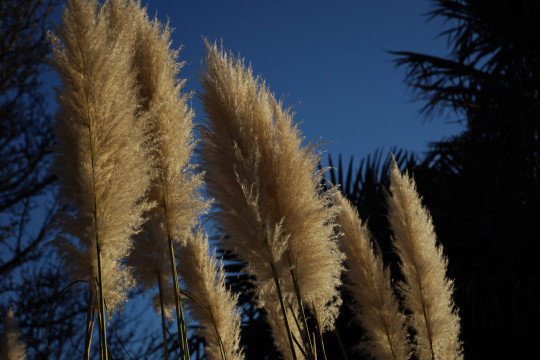
Pampas Grass, Mouli Paul.
Camera used: Sony Alpha 7ii.
Lighting used: Available light.
Pampas grass is definitely a part of my narrative as I closely and personally relate to it. I of course didn't have to plan for taking photos of it but just waited for sunny days and preferably during golden hour. The white flowering top looks gorgeous in the golden light of sundown.
Bibliography:
https://www.zarinabhimji.com/dspseries/18/1FW.htm
0 notes
Text
Post 6: First tryst with 35mm & inspiration from Vasantha Yogananthan
To take my mind off things, I thought of experimenting with a 35mm. We had already been inducted with the developing and processing induction by Dave. I didn't fully understand it which I never do unless I practically do it. In addition to that, I was a complete novice in analog photography. Till that time, I didn't know if I wanted to go ahead with digital or analog for my project. Plus, analog is bit pricey and time taking which is why I was bit hesitant. I had already returned the Mamiya R767 and rather got myself an Olympus Om-2n to start with. The reason I now prefer shooting with this model is because of two things - first is portability and second is that my subjects subjects don't get intimidated during shoots. But, the main reason is that even though it's an Olympus and not a Mamiya or Nikon, the results that it produces are quite satisfactory. I was bit apprehensive to use it at first as everywhere I read about portraiture or documentary, I was pointed towards Mamiya 7ii or R767 which are of course good cameras. But, the Om-2n is quite underappreciated even though the built is perfect for street photography or portraiture, it's pretty easy to use - loading and unloading the film and even the shutter speed and aperture are on the dial. I initially had some issues with the focusing, but that got sorted pretty quickly. I had purchased an Ilford FP4 Plus 125 black and white film so that I could develop it at the college itself. With Dave's assistance, the film was developed in ID-11 at 1+1 for 11 minutes. For the processing, we did few test strips but didn't do a full process or scan. It took us almost close to 3 and half hours to do the developing and processing. Film is a beautiful process. This is what Pip had told us during the film camera induction and I couldn't agree more. I will need to take few more sessions in order to get a complete understanding of how the developing works.
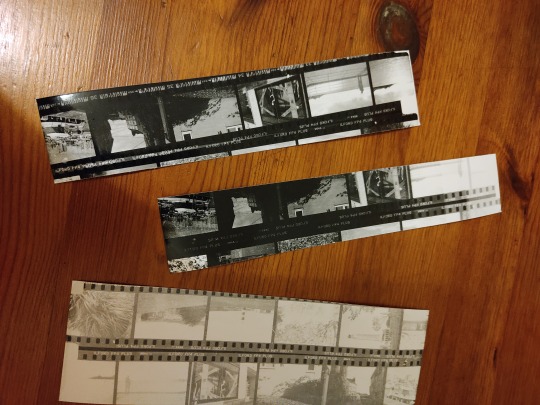
Test strips from developed Ilford FP4 Plus 125
I still haven't got any large scale prints done from this roll but had scanned few of the negatives from Spectrum. The scans appeared quite good and it definitely got me hooked.

Taken with Olympus Om-2n. Roll used: Ilford FP4 Plus 125.
I read up a little on Ilford FP4 Plus 125 and agreed on most of the things. It's almost 10 years older than Kodak Tri-X400. As I have not used any other film besides the FP4 Plus, I can't comment. But, the film had a good contrast which didn't look overbearing and the grains a had a certain classic quality about them. There are loads of details in the shadow portion and has nice mid-tones and proper highlights. Ilford FP4 Plus 125 has cubic grain as it's based on traditional emulsion technology. I first came across the different types of grain in Ray Goodwin's MA journal and then I looked up for more materials on the same. Cubic grain gives a much less sharp appearance to the photographs, kind of old-school, nostalgic feel - something which I want in my photos as well. I am unsure if I would be choosing black and white for my project as it's a lot about colour. I mean, colour would play an important role in my work and I can't omit it at all. But even if I plan to shoot with colour film, I have a very clear picture about the final results. Even though colour is an important element in my work, I am planning to achieve a muted and unsaturated colour palette. Nothing garish or harsh. Colour film would also be a bit pricey but I would anyway give it a try.
For using a muted colour palette in my work, I am highly influenced by Vasantha Yogananthan's work in A Myth of Two Souls. I had come across Vasantha's work in 2017 or 2018 and didn't look back since then. What appealed to me in his work back then was the dreamlike appearance in the photographs. Over seven years, which is from 2013-2021 Vasantha had travelled to India for about thirteen times to complete this project. Using a multidisciplinary approach which includes - 4X5 large format camera, colour photography, hand painted photography, mixed media and video installation, Vasantha worked with passerby as actors, regardless of the caste. In addition to that, most of the work he has done in this project are shot outside and not in a studio expanding it to new territories.

Vasantha Yogananthan, Early Times - A Myth of Two Souls, 2013

I did get in touch with Vasantha wanting to know more about his image making process to which he replied and send forward a number of interviews he had given. Vasantha's work has inspired me in ways more than one. Basically, it allowed me to develop my ways of seeing as a visual person. Even though, my current work is not directly related to any of his projects, but before making any photographs it is my practice to study his work because of the freshness he has brought about in color photography and specifically in showing India through colors. It is quite different from how the Indian landscape and people were perceived through Steve McCurry's portrayal of India. That doesn't mean that I am not an admirer of Steve's work. He had been one my first inspirations when I had started with photography. But, over the years, India has undergone a massive change and that needs to be highlighted in contemporary photography as well. This is where Vasantha's work had appealed to me and during my tutorial with Mohini Chandra in October, she pointed out the same thing. In fact, Mohini was the person who pointed out specifically that Vasantha has shown India in a different way unlike how it had been showcased till now.
Bibliography:
Ray Goodwin - MA Journal (tumblr.com)
https://wsimag.com/art/44253-vasantha-yogananthan
tps://www.lensculture.com/articles/vasantha-yogananthan-a-myth-of-two-souls-understanding-india-through-the-ramayana
0 notes
Text
Post 7: First tutorial with Jon and Tasnim's pre-wedding shoot
Seeing no ray of hope or a cloud with a silver lining, I literally stopped thinking about producing any kind of work. The only thought which comforted me was the 18 November shoot at Tasnim's (Mr.Reza's elder daughter) pre-wedding celebrations. At least, there was something to look forward to albeit at the end of November. But, till then I couldn't produce anything unless someone miraculously said yes to my proposal or Mr.Yeawor Ahmed managed to find out some time for the shoot. By then, I had already visited his store thrice after the first meeting and all the time he wasn't there. And, going to his store from my place does require a bit of a walking exercise which I was quite happy to carry out provided it gave me some good results. I inquired at his store regarding his availability to which they told that I can only find him on Tuesdays! And, Tuesdays are lecture days!
After the shoot I had done at Mr.Reza's place, I had also got in touch with the owner of Cinnamon Garden restaurant at The Barbican and another South Asian grocery store on the Embankment Road just beside Mr.Ahmed's store. Nothing worked out yet again as the owner of the grocery store was out of country till December and Cinnamon Garden never got back. The only thing amidst all this hopelessness was my first tutorial which I was kind of looking forward to. It was timetabled to be on the 9th of November and I was really looking to gain some clarity on how to get things going.
I still felt bit uneasy of talking about my project topic during the tutorial. Coming from a commercial background, I am still trying to grapple with the fine arts landscape. None of my family members are artists or had any art background except for my mother. But, due to various circumstances, she could never complete her studies. How would I talk about trying to focus on corner stores around UK as a project topic? The question which I kept on asking throughout is why corner stores? What do I want to find out from that? I definitely could relate to them and corner stores reminded me a lot of things but is that it? What was the exact thing I had been trying to find out?
Jon was quite patient and I was struggling to find the right vocabulary to make him understand my project topic. Surprisingly, what Jon told me cleared a lot of blockages in my mind. The key words which emerged from my conversation included specifically about 'home'. Relating to that, I had already been reading books on diaspora and migration as a lot of my work focused on South Asians. Jon told me the exact same thing. And, it was true. 'Home' was what I had been trying to search for and that's where the connect and relating to various things come into the picture. We also spoke about my next course of action which was Tasnim's wedding. More than the wedding, I was interested to capture the details, the emotions that run through and food as comfort.

Centerstage, Tasnim's pre-wedding ceremony, Mouli Paul, 2021..
Camera used: Sony Alpha 7ii.
Lighting used: Elinchrom BX500 RI with Elinchrom Soft box 66X66cm.
I had planned to carry extra lighting for the shoot and used the Elinchrom BX500 RI Kit and Foldable Softbox Dedolight. As I was still not confident with film and this was definitely not a test shoot, I chose to yet again go ahead with digital. I mean, with this shoot, I couldn't go wrong in any way. For the past two years, I had used a range of Elinchrom lights and felt quite comfortable with them. I was aware of the technicalities to a certain extent of not completely plus the light quality produces quite good results at the end when you look at the prints. Here again, I didn't use the lights for all the photos but for few. There was ample amount of natural light available that day which I took complete advantage of.
Centerstage forms the first work in my narrative and also the first photo I had taken that day. The room was full of people when I had entered and somehow too many people always suffocate me. I was waiting for them to depart from the room and they did after few minutes. The podium or the stage as you can see had caught my attention as soon as I entered. It was the same kind of podiums we used to make back at home for any festival. I still remember myself as the official stage maker in school. And, at home my sister and me would help out my father in making these different types of stages/podiums/pedestals during any celebrations. It's a ritual! This almost made me cry but of course I didn't. I asked Mr.Reza "Who made it?" He said, "We all made it together, yesterday night. Didn't get much sleep. Is it good?" And that's how we used to make it, pulling an all-nighter. I couldn't respond much but smiled.
There were so many layers to the frame with so many stories of the traditional podium with a backdrop of the oils. Basically, the composition and colours worked for me just right. All I had to do was allow some good light to play around. I took few plain shots in natural light and didn't like them at all. Then, I opened one Elinchrom light, fixed it on the stand, put on the softbox and took one more photo. I tried another one without the softbox, just with hard lighting. There wasn't much considerable difference seen in the last two. What I didn't want was soft lighting but needed the colours to come out and yet not look too overpowering. It was somewhat similar to Vasantha's work in Afterlife which is the sixth chapter of A Myth of Two Souls.

Vasantha Yogananthan, Afterlife-A Myth of Two Souls, 2020.
Even though Vasantha used hard lighting for this chapter, there is a certain unsaturated feel in the colours. Here, the colours convey a story rather than just being there on the photograph. Taking a similar approach, I want the colours to tell a story and not only add vibrance or character to my work.
Throughout the day, I made several photographs - the advantages of digital which I like and don't like at the same time. There's no anticipation, no performance or theatrics with digital. I definitely don't condemn the medium but it surely does give you too much of comfort which I feel is sometimes not required in the creative process. I positioned the Elinchrom in various locations at the place. It was bit difficult with so many people moving around but the didn't seem to mind as long as I was making photographs! I took myself along with the camera and lights to the kitchen where someone in the family was making a pineapple look like statue. She was poking the pineapple with toothpicked red and black grapes. I never saw anything as such before but it did look good. I clicked the shutter.
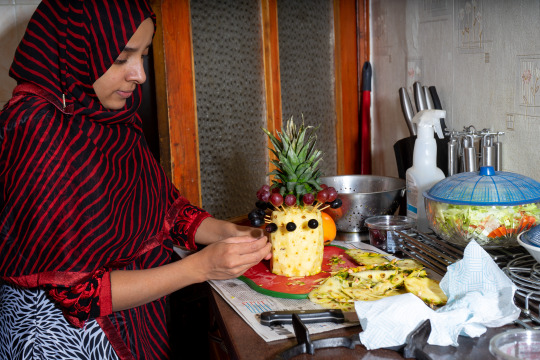
Tasnim's pre-wedding ceremony, Mouli Paul, 2021.
Camera used: Sony Alpha 7ii.
Lighting used: Elinchrom BX500 RI without soft box.
Mr.Reza had told me that the whole event was for two hours only but it didn't look like. And I enjoyed the time going around the place and clicking from behind the doors. A cousin of Tasnim ushered me inside her room as she wanted some pictures while getting ready for the ceremony. I took few photographs there when finally after an hour or so, Mrs.Tarafdar (Mr.Reza's wife) called everyone that food is served. Food and meals being served, meals with family being one of the main narratives in my project, I made several shots there. I didn't use any extra lights for that, but shot only with available lighting. The results came quite satisfactory.

Tasnim's pre-wedding ceremony, Mouli Paul, 2021.
Camera used: Sony Alpha 7ii.
Lighting used: Available light.
The main ritual started almost after two hours and by that time, the sun was already on the verge of going down. I used a combination of studio and the indoor lights. But, the results without the studio lights looked better. The ceremony is known as Mehndi where a semi-liquid blend of henna powder and water is used to create designs on the bride's hand and feet. The designs can be quite intricate and can go as long as the arm or just till the elbow. It takes a lot of time and patience to sit and create them. I had left midway but I did get to capture a crucial portion of the hand drawn designs on Tasnim's hands.

Tasnim's pre-wedding ceremony, Mouli Paul, 2021.
Camera used: Sony Alpha 7ii.
Lighting used: Available.
I returned at eight in the evening and although I did manage to produce a bit of satisfactory work, there was a certain unease that surrounded me. Till today, I couldn't figure out what was that about. Maybe, I am not too fond of rains and it was raining that evening. Or maybe, I yet again didn't know my next course of action. Somehow the sense of purposelessness can doom even some of your best days.
Bibliograhy:
https://vasanthayogananthan.com/books/afterlife/
0 notes
Text
Post 8: Shoot day at Bristol Gurudwara
There are times in your life when you are not aware that, maybe the one things which stops you from going ahead are the limitations in your own mind. And, this happens with me a lot until someone points it out, specifically. After the first individual tutorial and Tasnim's wedding, I was pretty much sure that I was definitely not looking for corner stores only. It was a part of the whole story of course but that's not the story. I had already collected few books on migration from the library with Donna's help. The book that I had been reading that time was Migration by Michael Samers. Donna had particularly marked a section which would be relevant to me. Apart from that I had taken another book When Home Won't Let You Stay: Migration through contemporary art edited by Ruth Erickson and Eva Respini. The cover page of this book was this brilliant work by Reena Saini Kallat from her exhibition Woven Chronicle. Reena made this work between 2011-2016 which is wall map made of yarn, tracing and tracking the routes throughout the world where migrants had set their foot and through where they had traveled. Migrants included refugee, asylum seekers and contract workers. The work is still being updated by the artists to incorporate new routes.

Woven Chronicle, Reena Saini Kallat, 2011-206 from the book Home Won't Let You Stay: Migration through contemporary art.
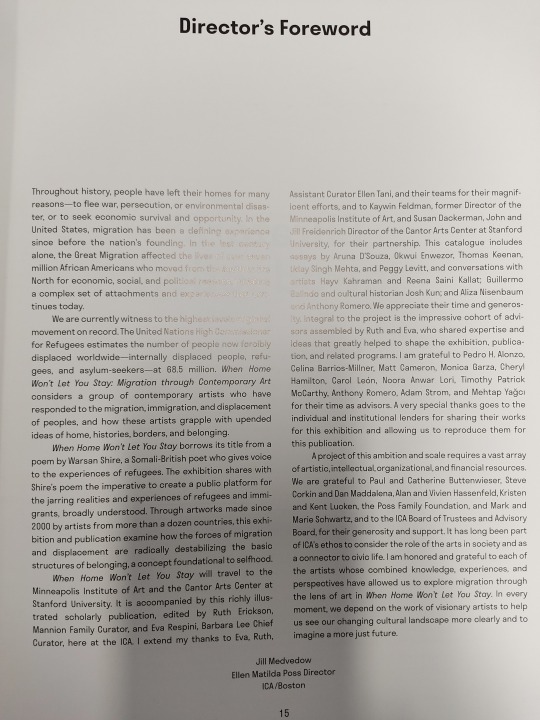
Excerpts from the book, Home Won't Let You Stay: Migration through contemporary art, edited by Ruth Erickson and Eva Respini
Certain pieces from the book literally spoke my heart and it was one of the first books which I actually found quite close to my topic of research. Migration by Michael Samers provided me with a lot of insight on the complex topic of migration, diaspora, displacement and identity. By that time, I had also started taking notes digitally rather than writing them down. Migration in itself may sound a simple word but has several terms and terminologies attached to it. Contemporary photography largely frame migration around trauma, dislocation, racism, pity but there's a lot more to be said of how photography is covering the various diasporas and movement of people around the world. I was getting associated with the whole concept of migration which included topics of citizenship, belonging, supranational, stratified and segmented citizenship, dual citizenship, assimilation, integration. It was quite confusing as there was a lot to take in and I was continuously thinking ways of how to incorporate everything into my writing Having a goldfish memory, I jotted down a lot of pointers in Google Docs . This was the particular document where I had been jotting down points at a later stage. Without having any other shoot or meeting with people lined up, I spent my evenings going through these two books.
Meanwhile there was another group tutorial with Jon which happened after the shoot at Tasnim's pre-wedding thing. When I was asked about the progress, I just let out all the frustrations, in a subtle way but I needed a solution! That's when Jon pointed out that maybe I need to try out new areas, new communities so that I don't become restricted. There is always a was that the topic can be later condensed but restricting myself could lead to my project getting stalled. I was also thinking of exploring cultural displacement and cultural hybridity as sub-topics. However, displacement was quite personal for me as apart from cultural, I have felt displaced and alienated almost all of my life. Our family had migrated from Kolkata (an eastern state in India) to Mumbai (a western state in India) in the year 2000. India being a vast country, the cultures are varied and I was born in a small town whereas Mumbai is a huge city. My first experience with displacement and culture shock happened right at that time and to completely adjust to the place it took me more than a decade. The worst affected was my mother who couldn't integrate into the fast paced life in the city. She was diagnosed with severe depression which affected her physically as well.
Going back to the group tutorial, Jon asked me if I could get in touch with Jabo Butera, Managing director of DBI (Diversity Business Incubator) at the Union Street. I had heard about DBI after I had arrived in Plymouth and thought that would be a good idea to reach out to him. Post the tutorial, I sketched out a plan to get in touch with people from various other communities.
Note: I could finally connect with Mr.Yeawor Ahmed few days after the tutorial and we again scheduled a particular time when I could come in the shop and do a shoot. Although, I wanted pictures of him and his family at his home but that wouldn't be possible at that moment.
I reached out to Plymouth Sikh Society remembering the mention of Batra Sikhs in Judy Harrison's book Our Faces, Our Spaces. Sikhs are a community from the North Western part of India, primarily from Punjab, Haryana, Delhi and Himachal Pradesh. Mr.Jaspinder Singh is the head of the community in Plymouth and he replied to my email after two days. He asked if I could go to Bristol Gurudwara with the whole group on 29th of November to which I agreed. Mr.Jaspinder Singh had moved to Plymouth around ten years back and owns a pharmacy right now at Tavistock. Before moving to UK, he was working in a hotel near the Himachal Punjab border. His wife joined him in 2007.


Bristol Gurudwara, Mouli Paul, 2021.
Camera used: Sony Alpha 7ii.
Lighting used: Available light.
Apparently, there is a monthly meet of all the members of the Sikh association at the Unitarian Church. For November, they all planned to visit the Bristol Gurdwara as it's one of the largest in the whole of UK apart from the one in Southall. We started at around 5:30 in the evening and reached Bristol at around 8. The Gurdwara was filled with people and I was amazed at the number of Indians living there. It was totally out of imagination. Generally, there's a langar (a communal free kitchen) in every Gurdwara. The one in Golden Temple, Amritsar, India is one of the largest langars in the world. The Bristol one had a pretty big communal kitchen and it was heart warming to see so many people gather around helping each other to cook, families coming together to eat. Mr.Singh and the other members offered around 9-10kgs of rice and other food materials to the kitchen. That's how it works. There's no money involved but you can offer a certain amount of raw materials and have the food. That was also the first time after several months when I got to have chai (tea) prepared by someone else other than me. It's a different feeling altogether to have your home food in a different country.
The Sikh prayer or Banis were being recited on the floor above where we were seated. Post having tea and snacks, we went upstairs and found ourselves a corner to sit down. The first rule of entering a Gurdwara is to wear a head covering as that's the way you pay respect. Throughout the prayer chants 'Waheguru' was repeated several times referring to God in Sikhism as described in Guru Granth Sahib which is the central religious scripture of the religion. I had been to a Gurdwara several times back in India but never had been seated in a langar or even wondered what everything was all about. Literally, thousands of people were there that day, all coming together to feel like a community, to bond. This is a home they have created to make themselves and the ones who have left their homeland to feel included, comforted and at home. Maybe, if I would ask any individual that day, "What does home mean to you?". The reply would be, "Just as I am feeling today". This is an assumption but yes, I definitely felt if I could be there for a longer time. The prayer ended around 10 and we went downstairs for dinner.
While going the car, Mr.Singh talked about how he had migrated here. Initially, he was living in Ivybridge and prefers it over Plymouth or Tavistock. We spoke about a lot of things - about what type of project am I doing, why did he leave Himachal, how is he finding it here and so on. Mrs. Singh was not too chatty but she experienced similar issues like Mrs.Tarafdar. Over time, she adjusted into this life and keeps herself busy with the pharmacy work and household chores. Other than the monthly meetings in the Unitarian Church, there is no one she can talk to. That day of the month, everyone comes together to relive memories and create new ones.
The challenge in taking photographs at the Gurdwara was that there were a lot of restrictions. However, I asked Mr.Singh if I could quickly take few pictures and that would be enough for the time being. He spoke to the manager there and they didn't have a problem. We came back around 1am that day and that was the first time in two months when I felt a little accomplished. Not much though, but it was good.
0 notes
Text
Post 9: Poems which influenced me and photographic influences

Amrin Khalil @inaarapoetry
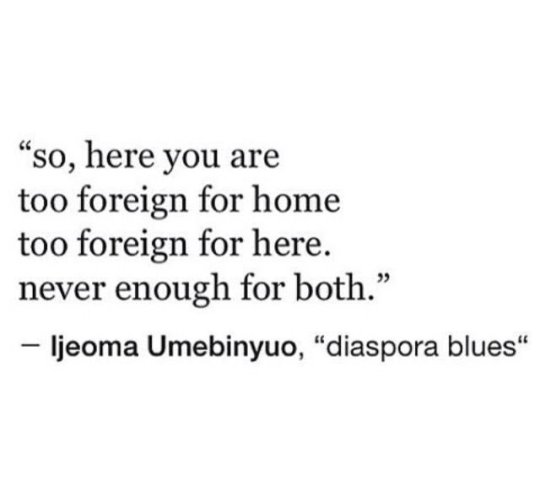
Diaspora Blues by Ijeoma Umenbinyo

Written by Tashyana Handy
This of course didn't influence me to write poems but they did serve as a rough framework for my topic - as to how the writing or the language needs to be and what the kind of emotions that needs to come out from my work and how I would want my work to be viewed. All these three poems connected with me a various levels and helped to propel the project in the right direction. At times, when I feel disoriented and lost, I go back to reading these and that really does help me.
Post the group tutorial, I also made few maps just to give me a clear understanding of what I am trying to find out. I have no clue why I didn't do it earlier but anyway, the maps looked like these.
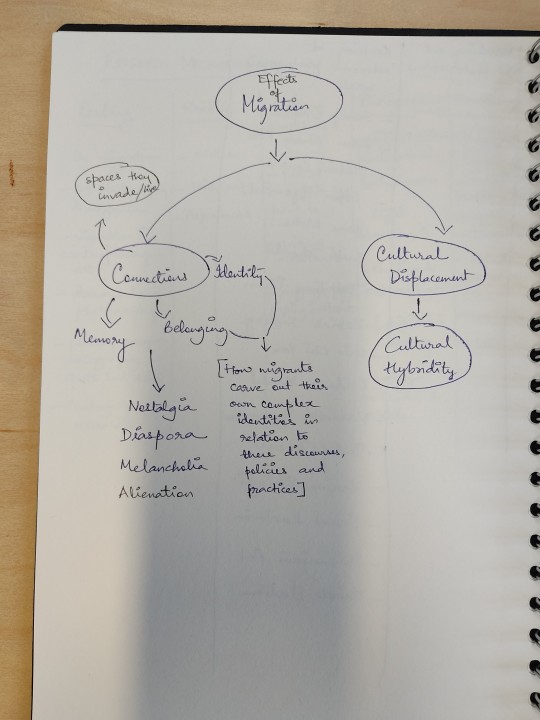
This was the first map when I gradually steered the topic of my project towards migration from just studying the South Asian diaspora. Basically what interested me were the inhabited spaces which migrants or immigrants have turned into their home in a foreign land. I also learned about the concept of 'double migration' from Asia to Uganda/Kenya and then to England/USA/Australia. Sonal Kantaria's Traces was quite influential in exploring portraiture, inhabited spaces and the Australian landscape while documenting diverse range of individuals of Indian origin who settled in Australia. For people who had gone through 'double migration', there was a lot of identity loss and their next generation doesn't even know with which place they would identify with.
This map basically showed the effects or responses that come with migration or changing your homeland. You try to find comfort and shared connections, similar stories, people and feel a sense of longing, melancholia and alienation. Cultural displacement is yet another term associated with migration which is quite common and gives rise to a lot of responses. The relationship between all these are quite complex and it's confusing to understand which is the cause and which is the response. While displacement can give rise to nostalgic feelings, it can happen the other way round as well. When you feel nostalgic, you generally travel to the past and do not generally associate yourself with the current settings. You feel displaced and alienated.
Cultural Hybridity is a response to displacement when you are trying to integrate and accept the dominant culture. That's seen as a way of adapting to the current situation when you start combining and blending in traditions from both the cultures to maintain harmony and peace. One of the best examples would be through food such as cakes in a South Asian wedding which is not traditional but a response to blending in both the Asian and Western cultures.

This was the second map which I had made breaking the first one to understand the details of my topic. What do I mean by the 'Connections - Making/Shared'. I was continuously in search of things I could relate to because in a way I experienced loss and I wanted all those things back which gave me a sense of comfort and home. Connections were mostly through food, clothing, materials, sharing similar experiences or language. For instance, I relate a lot to people from Bangladesh because we are originally from there and my ancestors had migrated to India way before the India/Bangladesh partition. Even though, everyone in my family holds an Indian passport, we still associate ourselves with Bangladesh. Yet, we are Indians. I also shared the same language with Bangaldesh which is 'Bangal' but in India we call it 'Bengali'. The dialect is different but yet again, I have many people in my family who still speak in the same dialect as that of Bangladeshi people. The question here is 'What's my identity?' Also, I have never been to Bangladesh but grew up hearing stories about the place, people, food and everything. At home, we still cook our traditional Bengali food in the Bangladeshi way.
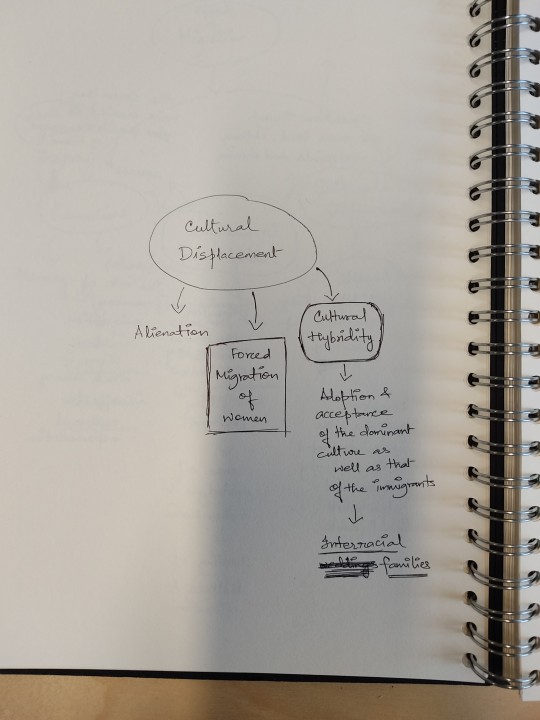
This was the third map which shows the second effects/responses to migration. Cultural Displacement as a topic still needs to read and researched well for me. I had also included Forced Migration of Women because the women I had talked to did mention about feeling of alienation and displacement post migration. However, their migration was not exactly forced but they were married and hence didn't have a choice. I don't know if I should be saying this but there was no serious trauma associated with their migration other than the feelings of nostalgia and displacement which of course questioned their sense of belonging. But, should their migration be termed as 'forced'?
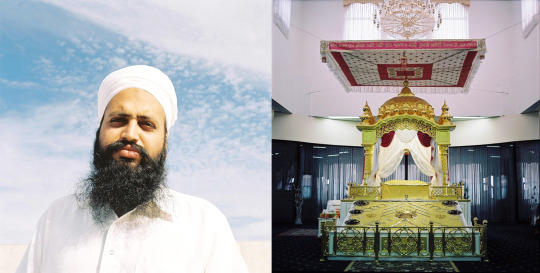
Traces, Sonal Kantaria, 2013

Traces, Sonal Kantaria, 2013
Bibliography:
https://www.sonalkantaria.com/work/traces-2/#6
https://www.sonalkantaria.com/work/traces-2/#11
0 notes
Text
Post 10: Shoot with Mr.Yeawor Ahmed (2 Dec 2021)

Mr & Mrs.Ahmed, Mouli Paul, 2021.
Camera used: Sony Alpha 7ii.
Lighting used: Available light.
The stars really aligned for me after Tasnim's pre-wedding day and specifically post the group tutorial with Jon. There was also the formative assessment which was scheduled to be on 7 Dec and of course I was not at all comfortable doing it. I mean, public speaking has never been my forte. And, as expected, it didn't go too well but we will talk about that later on.
2 Dec was a Tuesday and Mr.Ahmed is generally available on that day of the week. Fortunately, I had got an off on the 2nd after the morning lecture which made me schedule it. Mr.Ahmed is the owner of Kushiara Foods which is in Embankment Road. I mostly get all my food supplies from there as they are directly brought from India or Bangladesh. Similar to Mr.Reza, even Mr.Ahmed had migrated to the UK from Sylhet, Bangaldesh almost half a century back. In fact, it was his father who had migrated around 1947 or 1955 to Oldham. I don't have all the facts available right now but most probably, he was working in the ship. Mr.Ahmed joined later in the 60's or 70's and they eventually moved to Ivybridge, Saltash and finally Plymouth.
He recounted those days around 20 years back when they used to get all their Bangladeshi food supplies from Birmingham. Nothing was available in Plymouth and they had to wait for days to have a taste of the much favoured 'Hilsa'(Hilsa fish, from the Mackerel family) , 'Kalijeera Chaal' (short-grained rice used for making puddings or flavoured rice) or the 'Gondhoraj Lebu' (fragrant oval shaped lemon). He still has family back in Sylhet, Bangaldesh and keep on going back every 2 years. The store is run by Mr and Mrs.Ahmed. Surprisingly, I found Mrs.Ahmed to be quite stoic. She had well adjusted to the life here and even though she did have issues initially but according to her, that's what life is all about. She was excited for the shoot and went in to change into something good. I was more keen on taking pictures when she was more herself. But, I guess she was happy getting dressed up.
Mr.Ahmed also reminds me strongly of Rahmat Chacha, a character in the 1957 Bengali movie Kabuliwala. For days, I had thought over as to why does Mr.Ahmed seem so familiar to me. I had seen the movie innumerable times in our black and white TV years ago.
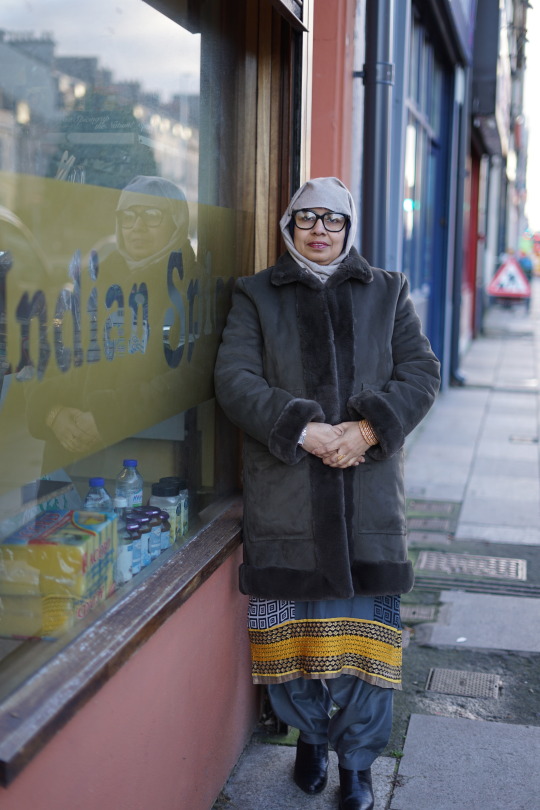
Mrs.Ahmed, Mouli Paul, 2021.
Camera used: Sony Alpha 7ii.
Lighting used: Available light.
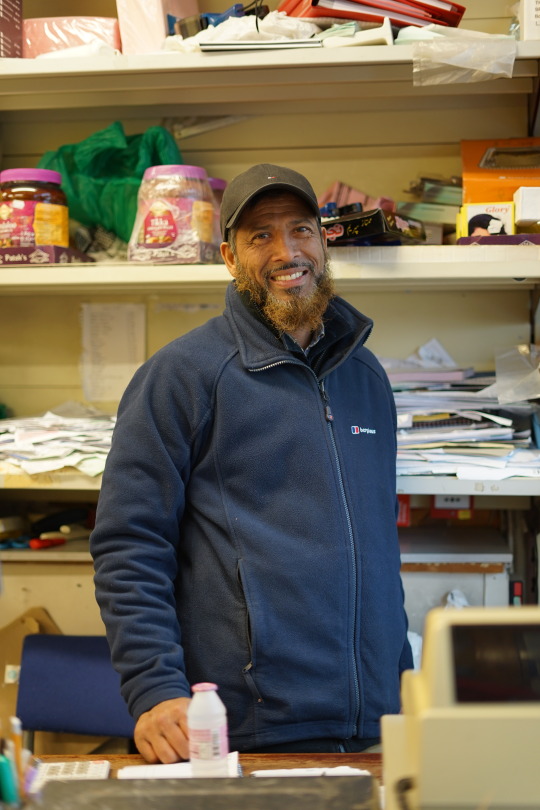
Mr.Ahmed, Mouli Paul, 2021.
Camera used: Sony Alpha 7ii.
Lighting used: Available light.
I forgot to mention that I had taken the Mamiya 7ii that day along my digital camera. The film roll was Ilford FP4 Plus 120 and it was a black and white. However, I didn't develop the roll till date. The visuals I had imagined were influenced by Gideon Mendel's image making process in Submerged Portraits, Drowning World where he had made simple and direct portraits. Most of Gideon's work in Submerged Portraits are documentary but somewhat constructed. He preferred taking things slow and before doing the actual shoot, he preferred to visit them multiple times. That's the similar approach I have been taking from the time I started with the work. It's always easier, more intense and a collaborative process when you know the person well before taking the photographs. It's a of relationship and trust building along the way and I would always want to continue this relationships throughout my life. I am definitely not connecting with them just for project. It's a lot beyond that.
Gideon's interview about where he talks about his process can be found here:https://youtu.be/XsaO12z4g-I ..Mendel has been working on this specific project since 2007 and it's ongoing. Over the years, he has travelled throughout the world capturing and documenting people who have survived the floods along the way, lost almost everything. He has also spoken about his use of Rolleiflex camera which keeps the person being photographed at ease. Basically, the positioning of the tool as it's eye-level and the person doesn't need to look the photographer.

Submerged Portraits, Drowning World.Gideon Mendel, 2008.

Submerged Portraits, Drowning World. Gideon Mendel, 2012.
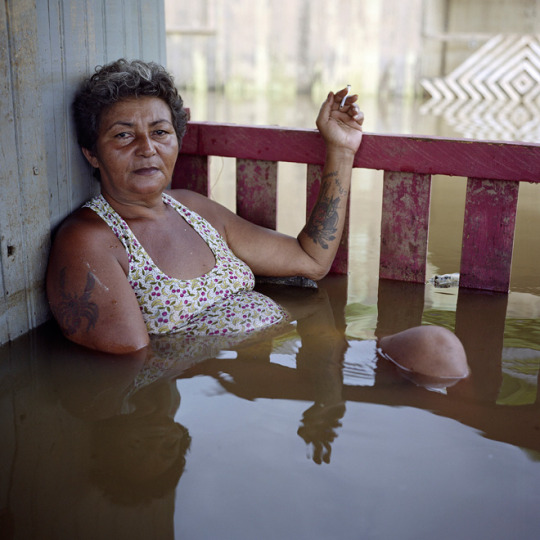
Submerged Portraits, Drowning World. Gideon Mendel, 2015.
That day, we chatted for about 3 hours because I went in at around 2:30 and stayed back till the shop closed. The most endearing gesture he always does is give me a pack of two fruit juice bottles whenever I go in. Till now. The bad part is that he never almost pick my calls and I always have to personally go to his shop and timetable with him. Well, that's not too bad in fact now when I look at it.
Bibliography:
https://gideonmendel.com/submerged-portraits/
https://youtu.be/XsaO12z4g-I
https://en.wikipedia.org/wiki/Kabuliwala_(1957_film)
1 note
·
View note
Text
Post 11: Formative Assessment and Christmas break!
I identify myself as a painfully awkward and shy person and talking or demonstrating in front of more than one person is not something I do often or like to do. For me, there is nothing more annoying than speaking in public. Most part of my life, I have dreaded giving talks or presentations or even asking questions in a room full of people. Once I remember not turning up on the stage to perform when my name was called. That was quite embarrassing!
Hence, that's understandable why I was not at all looking forward to the assessment. As expected it didn't go too well and I had almost forgotten what to talk about, fumbled a lot. However, the assessment did clarify about what exactly I wanted to do with my project. Migration was definitely not personal for me and yet again the only keyword which came out was 'home'. Surprising, but yes, that's the truth. Quite similar to the tutorial with Jon which had cleared my head.

Mind map 4 and the new one
So basically, the loss of the sense of home which leads to displacement and then nostalgia. Both are related and the question here is which triggers what? Of course, loss is the root cause. And, I went ahead with nostalgia, homesickness and displacement as the keywords. Now, loss of home or the sense of home can be due to a number of reasons. A person can experience nostalgia and displacement either due to a personal loss, migration, loss of homeland due to climate change and for women, it can be forced migration. However, I am not sure if I would be going ahead with the forced migration of women.
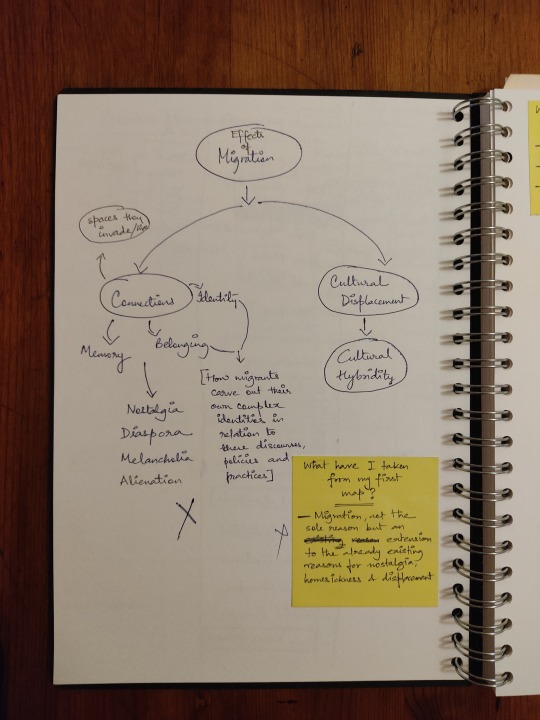
Reflections - what did I include from the first map?
Few pointers here:
Migration for me is an extension of the already existing reasons for nostalgia, homesickness and displacementConnections because yes, I am looking out for them continuously. Moments or people or things which remind me of the pastDisplacement because that's associated with all kind of loss or a transition

Reflections - what did I include from the second map?
Exploring inhabited spaces of people which are intimate and personalSeeking connections (mentioned in the previous para)Notions of belongingSense of nostalgia and feeling of isolation, melancholia

Reflections - what did I include from the second map?
Displacement as a response to loss and transition and understanding the relationship between nostalgia and displacement.
The assessment had definitely helped me but by that time, I had done a lot of irrelevant reading, very specific to migration. Plus Christmas break was nearing. I looked up on materials connecting nostalgia to home and loss of home. There was not anything specific to my topic of research. However, I found quite a few online references from JSTOR. It was also high time that I had to start working on the essay for the first module. I knew I would be struggling to be bring it all together. The fact is that I am quite clear visually about what I want in my photographs and I even know what I am thinking. But, when it comes to articulating and writing, everything goes out of the track. We even had another group tutorial just the week before break and I shared few pictures from Tasnim's wedding in that. Both Jon and Nadine agreed that, I really need to go ahead with colour as a medium for my project.
And, I was quite keen on going ahead with colour and analog. The challenge here was that I couldn't develop the colour roll in college. Previously, with the black and white roll, I could do it myself under Dave's assistance. But, with colour, I couldn't get involved with the process completely. With only few days left for college to shut down, I had booked a Mamiya 7ii as it was quite good for portraits. But, I didn't want to load the colour roll so soon without testing the camera once. And, I was quite right. Just before Christmas during the break, I had been to St Ives taking the Mamiya along with me loaded with a Ilford FP4 Plus 120. After two shots, the camera got stuck frequently and the roll got damaged and obviously I couldn't make anything. The only thing was to wait for the break to get over.
Christmas and New Year went completely dry and I couldn't and didn't produce anything at all. Post the shoot with Mr.Ahmed, there was another long period of lull which I think I was getting used to. Is that bad? I felt guilty as well. But, again the good part here was, I met up with Mr.Jabo Butera, Managing Director of DBI. The office is located in Union Street in the HQ building. Jabo had been referred to by Jon and although I had sent him an email during the first week of November, we met in mid-December. The first meeting was bit messy as my project pitch was quite blunt. I can't find any better word to describe that. Fortunately, Jabo agreed and we scheduled to meet in the first week of January.
0 notes
Text
Post 12: Shoot on 16 Dec 2021

Showing displacement with materials. Camera used: Sony Alpha 7ii.
Lighting used: Elinchrom BX500 RI (key light without soft box and secondary light with soft box)
The idea was to show displacement through materials using an egg carton which is used to store buttons, needle, wool, thread rather than in a sewing box. Here, the sewing materials are experiencing a change, a displacement as they are not in their ideal location which is the sewing box.
I had used a combination of hard and soft lighting for this and I preferred the hard lighting because it denotes contrast. Displacement is quite tough and using hard lighting to communicate the emotions made sense to me. I am not too sure if I would be going ahead with this for my body of work as the look and feel is somewhere not fitting into the project.

Camera used - Sony Alpha 7ii.
Shot with Elinchrom BX500 RI without Soft box.

Gaamcha (towel), Kaagoj (newspaper) & Coffee. Camera used: Sony Alpha 7ii. Lighting used: Elinchrom BX500 RI without soft box.
I had found this traditional cotton towel or Gaamcha as we call in Bengali in Mr.Ahmed's store. The colours found mostly are in bold red or green and have these stripes on them. The red and green stripes or the red and white stripes are quite common and used by most people in rural and even urban Bengal, an eastern part of India. The Kaagoj or the Khoborer Kaagoj means the newspaper and a cup of hot tea or coffee. The coffee maker is a traditional copper/brass container used in the Southern part of India. In West Bengal, we would use a a ceramic or a steel cup for the beverage. Together, they depict a quintessential morning ritual for a Bengali.
The reason for using hard lighting for this shoot was to recreate the same kind of scenario which I have seen over the years. Winter mornings are quite dark in India as it's here. And, the lights still need to be switched on even after half past 7 in the morning. The Gaamcha placed on the rope and getting illuminated from the top by a 60 power bulb which is casting ghostly shadows had been a regular view for me in my childhood.

Shoot in process - 1 (using hard light from the right)
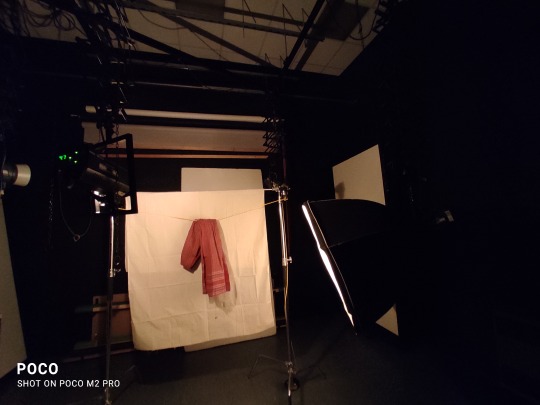
Shoot in process - 2 (using hard lighting from left and a soft box from right to check if the right light softens the shadows)

Diagrams for light setup
I normally sketch out light setup post the shoot so that it helps me later on. If I am aware and confident of the lighting I am going to create for a specific shoot, I sketch prior. This one was post the shoot as I had worked with 2-3 types of setup to finally get what I had been looking for. Also, I discarded the idea of having a white background and opted for a beige one instead for grittier feel. This was a learning from the last shoot that I had undertaken in the starting of November. One thing I became quite clear about over the days is that I do not want a clean fetishistic look in my photos for this particular project. Although, that was the initial idea behind taking clinical white background images inspired by Sim Chi Yin. Yet it is important to stress that me or my work is not unconcerned about experimenting with other colour palettes, lighting and design elements.
More photos from this shoot can be found here.
Christmas break was quite dry and I couldn't produce anything in those whole three weeks. All I had done was started with the essay which was a series of bad drafts, one after the other. It still is. I have lost the count of iterations I have done in that. Often, throughout these months, I had a feeling that my topic for MA is way too simplistic and bland even though it is quite personal. When I see the work done by my peers in my discipline and others, they all feel so well-thought out. There is a nagging thought that as a MA research topic, it lacks the intensity it needs to have. Or maybe, I don't have the vocabulary.
Over the break, I also studied a lot of other photographer's work and with a new direction in my project, I particularly looked for contemporary documentary photographers who touched the topic of 'home'. I found two quite good work done by Black Women Photographers and the other by Magnum photographers in collaboration with Fujifilm. What surprised me was the simplicity in those images but yet the power and intensity they communicated. Personal and intimate, these images were taken in their home and captured the essence of comfort in an endearing way. There is a particular image made by Mark Power where he had captured his family sleeping, and not literally showing them sleeping - but details like a top shot of two pair of legs curled up as we do when we sleep. Alex Majoli had shown how home can be a mess in his own way - watermelon seeds strewn in a wash basin.

'Home' by Magnum & Fujifilm, Mark Power, 2017
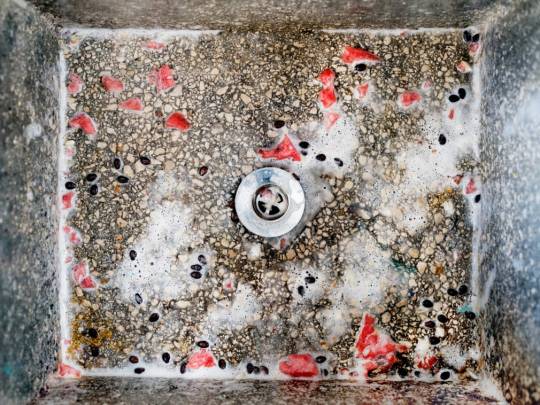
'Home' by Magnum & Fujifilm, Alex Majoli, 2017
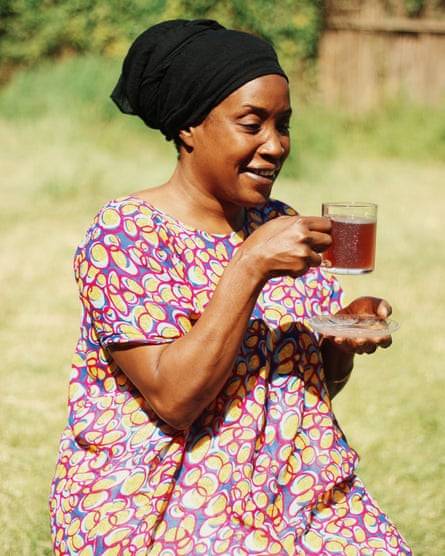
'Home' by Black Women Photographers, Esther Sweeney, 2021

'Home' by Black Women Photographers, Dola Posh, 2021
Something I would also like to point out is that for the collaborative project between Magnum and Fujifilm, 16 photographers from around the world were given the opportunity to document their ‘home’. However, for many of them, Magnum is home and they had escaped their birth homes to become photographers as they felt they didn’t belong there. The struggle of this project was rooted in feelings of displacement, dislocation and estrangement from their original home. Yet they returned to show their home as it is.
Home is comfort and in my first meeting with Jabo Butera, he had called 'Home as honesty' which still rings in my ears. Both these works have left a profound impression on me. I am trying to take a similar approach in showing the same elements - personal, intimate and raw. There are basically two parts to the narrative where I am exploring portraiture (this has been hard!) and in the second where I am interested in those spaces inhabited. There is also a third part of the narrative which is about the connections namely - Pampas grass, food, gaamcha (towel) and many other things which I will come across in the coming months. Although, my work is documentary, it's a blend of constructive and staged along with simple and direct ones.
Bibliography:
https://www.theguardian.com/artanddesign/2021/jun/28/black-women-photographers-on-the-theme-of-home-in-pictures
https://www.theguardian.com/artanddesign/gallery/2018/may/18/home-through-the-eyes-of-photographers-around-the-world-in-pictures
https://www.magnumphotos.com/arts-culture/society-arts-culture/fujifilm-home-magnum-photos/
0 notes
Text
Post 13: Experimenting with other disciplines
Before the Christmas break, I also got this idea of making something else other than a photograph which talks about my project. I had seen a beautiful and thoughtful work done by UAL MA Photography graduate Liying Hu. It was a suspended hammer slowly hitting a nail placed on a stone mimicking the fall of cherry blossom during autumn. It was the sound which was forming an image of the falling cherry blossom. What inspired me was that she is a photography student experimenting with a different discipline and creating something so thoughtful. Here I was also informed by Firoz Mahmud's, a Bangladeshi artist 'Lyapa Art'. The term was coined by Mahmud himself seeking inspiration from the anointing and plastering of walls with clay by rural Bangladeshi women. Apart from Bangladesh, it is also seen in rural Bengal. He uses the same technique in his paintings which he had researched during an art residency program at Rijksakademie VBK, Amsterdam.
youtube
Liying Hu, MA Photography, UAL
These two examples got me thinking as to what could I bring back from my childhood and give it a form. It was not until the end of December that I finally had a vague idea of what can be done. A memory. Basically a memory of the subtle tinkling sound which came from the bangles my mother wore in her hands. There were just three bangles - one made of ivory, one of red coral and the other was iron. The ivory one is called Sakha, red coral is Pwala and the iron is Noah. That's the mark of a married Bengali woman. I remember waking up to that sound when my mother was busy in the kitchen early morning to hearing it throughout the day in intervals. The subtlety of the sound still amazes me as it was almost like a melody to my ears. If I could bring that back in any way, I would.

Manual drawing of the installation

Digital drawing of the installation
This was a rough sketch of what I had in mind and I spoke to Noah Taylor from metal works if we could bring this into form. Noah made quite clear that I needed to go through some research on the principle and also the technicalities. Truly speaking, I wouldn't have any understanding of metals at all but post the 101 submission, Noah would induct me for about an hour on how to use metals to create work. And, from that onward, I will need to experiment and see if I can make this.
Basically, it's like a pivot which would repeatedly oscillate to create that subtle melodious sound. The red and white bangles would be suspended from the end of the metal rod and the steel ring on a wooden box. However, the wooden box can absorb the sound of the metal or there are technicalities here again which I need to read about. I will get started on it post the recent hand-in and see where things go.
Bibliography:
https://www.otafinearts.com/artists/41-firoz-mahmud/
https://youtu.be/SKQsYtQcZB4
0 notes
Text
Post 14: Shoot with Jabo Butera, 9 Jan 2022
This was not again one of the days where everything went on as I had planned and not even the next shoot which was scheduled on the 12th of Jan with Mrs. Tarafdar. I could make a bit of work but nonetheless both the days were not a huge success. Till today, in the last three months, there have been only three days when the shoot went well and I could get what I had visualized. Jabo is a busy man and requesting an hour from him at his home can be bit difficult. I met with Jabo first time on the 6th of Jan, three days prior to the shoot and he gave me his background story. I was still taking recordings in my mobile and it's high time I needed to teach myself using the Zoom Recorder.
The recordings can be found here: https://drive.google.com/drive/folders/1MnuemVcJizzvtseTYsBj_sMHaca4phhZ?usp=sharing
The first meeting with Jabo was enlightening. He had been a freedom fighter at the Rwanda Civil year for a year and half before fleeing from there, travelling through parts of Africa and finally coming to England. For him, home is soil, it's honesty. He returns back to Congo and Rwanda quite often but he also questions his identity. Where does he belong? With whom does his children relate to? They don't relate to the life Jabo had left behind in his country. Interacting with him and provided a lot of clarity in my work. Although, we have not spoken officially, but we might do a collaboration later on during the course if everything goes well. He did mention about a professor from the University of Bristol who was working on a research project ‘Food as Identity’ and I was quite drawn to it. I wish I had met Jabo earlier in November. My project would have turned out much better than what I am doing right now.
I asked if he could give me some time for a quick shoot because my main intent was to see him doing what he loves the most. Gardening. And, he did have a pretty huge garden. 9th Jan was a Sunday and I took a long walk from Stonehouse to Devonport and it was almost 35 minutes. Meeting with people and these multiple visits really does give me my daily dose of exercise and I am not complaining. That's a part of what I am doing and I do receive immense joy from it. I had also made a list prior to this shoot. Although it may sound a bit silly, but, it really does put things into perspective. And later, I found out that even Alec Soth who is an American photographer known for his large-scale portraits makes lists as well. In fact, listmaking is the main element in his creative process.

Listmaking for 9 Jan - Shoot with Jabo

What had worked and what didn't work out
The time was quite constraint and the shoot didn't go according to the list I had made. The good part was that I had carried two analog and my digital camera. By that time, I had already decided that I would be going ahead with analog. And, that requires practice. As I had used the 35mm two months back, I was bit comfortable with it and as for the medium format Mamiya 7ii, I was struggling. I had loaded a Kodak Ultramax 400 in the Olympus Om-2n and a Kodak Portra 400 into the respective cameras. I was simply not aware at the time which one would be a better one for the photos I wanted. My go-to store for anything related to film is Soperfect Images, just a few minutes walk from the college. I even got the films developed and processed from there. And my next aim is to learn how to develop and process colour negatives. The one for the black white, I had already done at college.
Jabo mostly does gardening with his kids during summer and hence I couldn't really capture him in his element. His daughter Angel was the most adorable kid I had seen and she was a natural poser. I guess, most of the photos I took were of her and her toys scattered all over the place. The medium format had 12 films, so, it was quite limited. I mostly used the 35mm and my digital camera and took few similar shots. The reason why the shoots are not being completely successful could be due to the lack of communication. It even happened in the following shoot which I had done on 12th of January. What I have decided is that from the next shoots, I would share the list beforehand with my participants. That way, they would get the idea and be prepared and let me know what can be done and what cannot be.
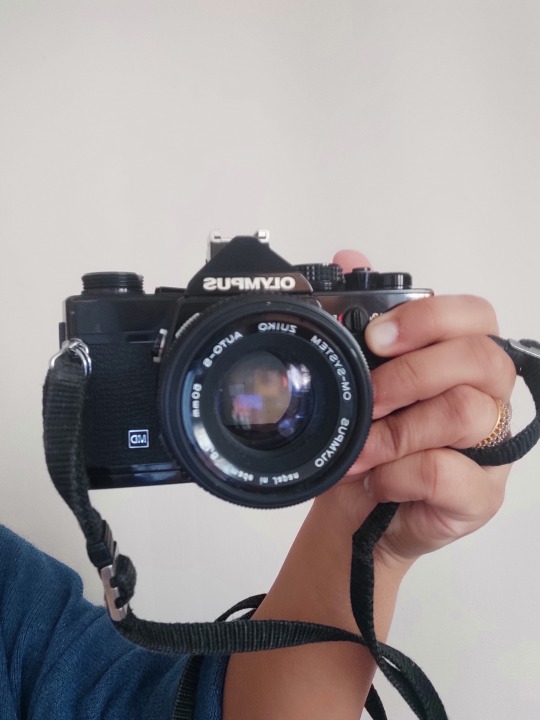

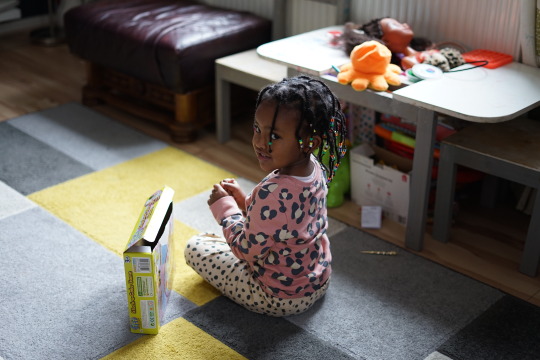
Angel, Jabo's daughter. This was taken with digital - Sony Alpha 7ii.
Lighting used: Available.

Jabo Butera. Camera used - Sony Alpha 7ii.
Lighting used: Available light.
I haven't yet received the developed and scanned images from the film. There were pretty decent ones I had taken with my digital camera. The formal portraits need to have more space and I have to consciously work on that. Right now, they look bit cramped and not conveying anything as such. Maybe, that's where I need some more time while taking the portraits. I would again emphasize here that I am getting quite comfortable using the Olympus Om-2n. It can be because I am new to film and that's the most user-friendly analog camera I have used till now. With the Mamiya 7ii, I still need to build a relationship. The other camera which I think I mentioned previously would be the Rolleiflex. Both Mamiya 7ii and Rolleiflex are made for portraits. And, I read later on that Kodak Portra 400 is a good film choice for portraits purely because of the colour palette. The tones are quite muted and the colours don't seem to garish.
0 notes
Text
Post 15: Shoot with Mrs.Tarafdar, 12 Jan 2022
For this shoot as well, I had taken both the analog cameras and my handy digital. Even though, I keep on calling my digital handy, it has been a lifesaver in a lot of situations - both in studio and outdoor shoots. It can also be that I am way too dependent on my Sony Alpha. This is my second camera after Nikon D90 which I had used for almost 10 years. Long story short, the Sony gives excellent results even in tricky light situations and is one of the best mirrorless cameras known right now. I know I might never be going back to using a Nikon or a Canon after using Sony.

Listmaking for 12 Jan - Shoot with Mrs.Tarafdar.
The intent of this shoot was to get to know her better as a person. In addition to that, we could speak for a long time because of the same language. She still reminisces about her time in Bangladesh so many years ago. Although, they all keep on going back to Sylhet, Bangaldesh after every two years, it's never enough. I can very well relate to the feeling because I had seen my mother go through the same kind of melancholia and longing when we migrated from Kolkata to Mumbai. We kept on going back home, to Kolkata every year and but those were the only times I had seen her happy.
I had made a list for this shoot as well but unfortunately, as I mentioned in my last post that it didn't work out. Mrs. Tarafdar had some other work to tend to but she gave me about 45 minutes as I had literally gone there with a luggage. Yes, I had carried extra lighting which I had taken over the Christmas break for some test shoots at home. Hanifa, Mrs. Tarafdar's daughter was there as well and she agreed to pose for few pictures. I clicked couple of them and released her quickly.
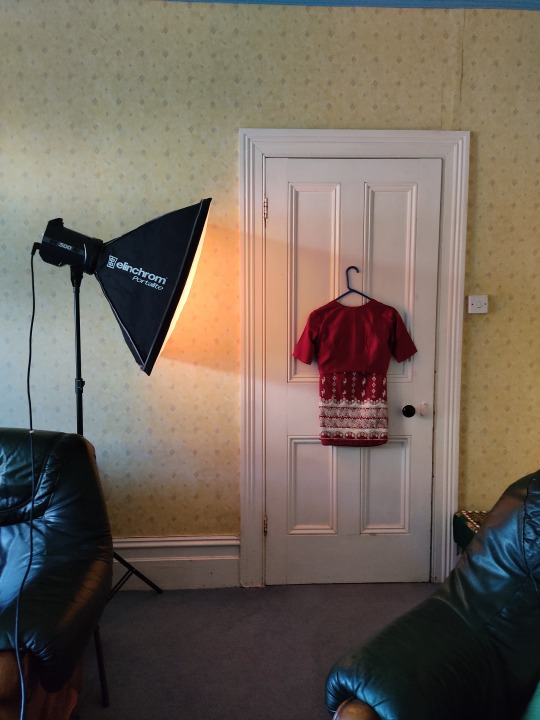
Shoot at Mrs.Tarafdar's home - 12 Jan 2022
Although, I had taken the extra lighting - Elinchrom BX500 RI, I did a foolish job while taking the photos. I realized later that I hadn't turned the trigger on for the initial few photos. The one with Mrs.Tarafdar's wedding saree is the only good shot which I had got that day. Although, I still need to see the results of the film.
Mrs.Tarafdar had kept her wedding saree (a traditional garment worn during the wedding). However, saree is an Indian and Bangladeshi cloth which is worn by the process of draping. For weddings, women usually wear a Banarasi Saree - ideally handmade by weavers from Benaras or Varanasi. And just like every wedding clothing in every culture, the Banarasi Saree turns into an artifact, a tangible memory which is kept, cherished, taken care of and sometimes passed through generations. Mrs. Tarafdar's saree was around 35-38 years old. She had mentioned and even shown me her saree during Tasnim's wedding in November and I remember telling her that next time when I come in, I would want to make a photograph of it.

Camera used - Sony Alpha 7ii with Elinchrom BX 500 RI and
Elinchrom Soft box 66X66cm

Hanifa, Mrs.Tarafdar's daughter. Lighting used: Available light.
The Elinchrom Soft box 66X66cm can produce a quite theatrical look to the images. However, I find it bit too harsh for certain situations. If I would want to have a softer kind of lighting, a bigger soft box would be better. I have made the similar pictures with the Olympus Om-2n and Mamiya 7ii. The next post would be after I receive the scans.
0 notes